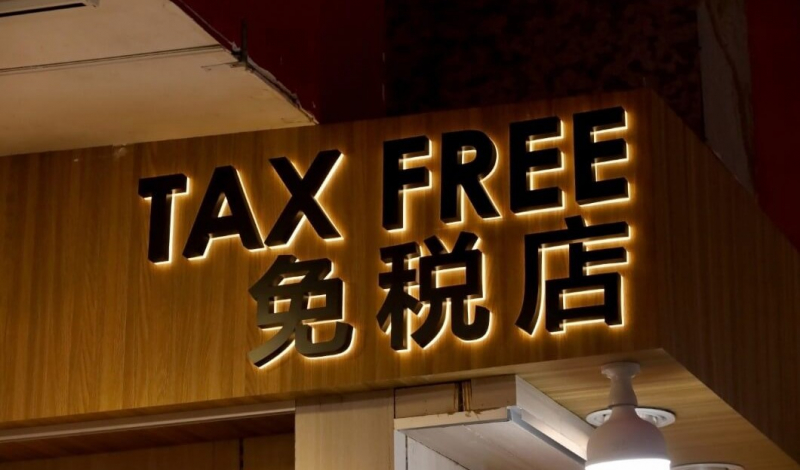China is seeing a fascinating trend where international tourists are increasingly turning their visits into shopping opportunities. The surge in outbound tax refund, which jumped almost 250% in the initial eight months of the year, highlights this shift.
It’s more than just an increase in financial figures; it signifies the impact of well-designed policy adjustments that are both boosting tourism and contributing significantly to the nation’s economy. With the rise in visa-free entries and the development of new duty-free locations around the country, the nation is solidifying its position as a top shopping destination for international tourists.
Recent statistics from Shanghai Customs demonstrate this increasing interest in shopping. Approximately 96,600 outbound tax refund applications were processed for goods valued at 2.07 billion yuan (about $290 million). These numbers represent increases of 168% in the number of applications and 83% in value compared to the same period in the previous year. Interestingly, these amounts have already surpassed the total for the entire year prior, suggesting a significant change in consumer activity. During the peak summer months at Shanghai’s busy Hongqiao International Airport, around 3,329 refund applications were made, totaling 125 million yuan. This is a 40% increase in volume and a 31% rise in payouts from the previous year, showing how eager travelers are to take advantage of deals before they leave.
This development isn’t accidental; it’s a result of deliberate planning. The nation’s improved tax refund system, amplified by a rise in international visitors, has simplified the process for cross-border shopping. Experts view this as a key element in stimulating shoppers’ interest and enhancing the overall travel shopping experience. According to the State Administration of Fiscal Affairs (AEAF), there has been an impressive 247.8% year-on-year increase in the number of people receiving tax refunds, along with a 97.5% rise in duty-free sales and a 96.9% increase in the total amount of refunds. By the end of August, there were over 10,000 tax refund shops across the country, which is three times the number there were at the end of the prior year.
The groundwork for these changes was established in April, with measures that lowered the minimum purchase amount required for refunds, raised the limits for cash refunds, expanded the number of participating stores, and included a wider range of products, from luxury items to modern tech. As a result, the combination of sightseeing and shopping has become a major attraction for international tourists traveling from Europe and Southeast Asia.
Click here to preview your posts with PRO themes ››

Urban Duty-Free Wave
While Shanghai is experiencing a boom, similar trends are emerging in other cities, especially in downtown areas where duty-free shops are rapidly appearing. Chengdu, known as the heart of Sichuan Province, is scheduled to launch its first downtown duty-free store this week, specifically for international travelers who have tickets for departures within the next two months. The store will focus on fast-moving consumer goods and popular local brands, appealing to travelers on airlines and cruises by mixing local products, such as spicy hotpot sauces, with global brands.
This opening is part of a larger trend: approval was granted in late August for duty-free locations in eight significant cities—Guangzhou, Chengdu, Shenzhen, Tianjin, Wuhan, Xi’an, Changsha, and Fuzhou—under new temporary management guidelines. The China Duty Free Group (CDFG) has already secured important agreements, including the one for Chengdu’s downtown store, in addition to those in Tianjin, Guangzhou, Shenzhen, and Xi’an. Guangzhou’s store began operations in late August, adding momentum to this expansion.
Cities such as Hangzhou are already seeing positive results. This hub in eastern Zhejiang now boasts 267 duty-free shops, a 126.3% increase from the previous year, with “refund-at-purchase” locations—where shoppers can instantly claim rebates—increasing by 785.7% to 124 stores. Sales of eligible goods have more than doubled since January, confirming the appeal of this model.
From Sightseeing to Shopping
According to Wang Peng, an associate researcher at the Beijing Academy of Social Sciences, the country is shifting “From ‘China Travel’ to ‘China Shopping,'” which is turning its tourism sector into a strong driver of consumer spending. This approach strengthens the inbound tourism market and highlights the nation’s commitment to greater openness, catering to the diverse preferences of international tourists with high-quality offerings. Visa-free policies? They’re proving to be kind of a big deal. Overseas entries hit record levels in 2025, and this whole retail revival seems to be riding that wave. It started as a post-pandemic bounce-back, but now it’s, like, a full-on surge. Travelers aren’t just snapping photos at temples; they’re filling their suitcases with silk scarves, jade jewelry, and all the latest cosmetics.
And as the leaves change color along the Yangtze River, China’s duty-free scene just keeps humming along. More shops, easier refunds, and even more stuff to buy – the message is pretty clear: Come to China, but don’t leave empty-handed. In this “Year of the Shopper,” the real keepsake? It’s probably the economy’s bright future.


